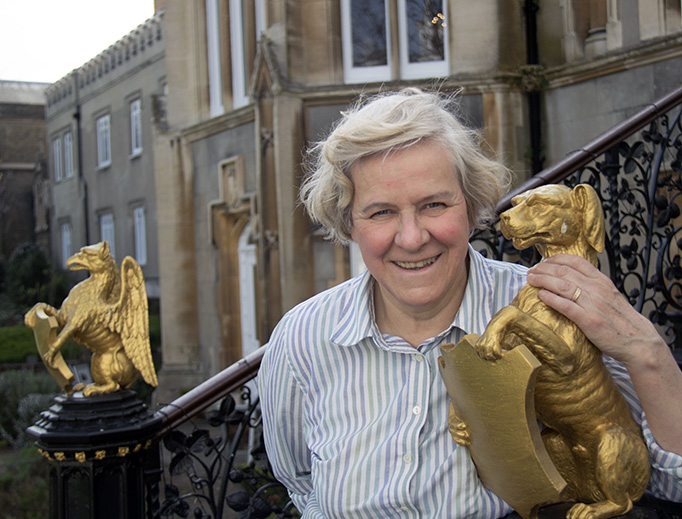Going on Record: A Chapter of Britain's Catholic History
St. Mary’s was founded as a Catholic teacher training college in 1850, the year that the Catholic Hierarchy was restored in Britain.

Register correspondent Joanna Bogle has been appointed Visiting Research Fellow at St. Mary’s University, Twickenham, London’s first Catholic University.
Bogle, who is the Register’s London correspondent, is a biographer, historian, and author of some twenty books. She has been given the specific task of writing the University’s history, ready to mark the 170th anniversary in 2020. St. Mary’s was founded as a Catholic teacher training college in 1850, the year that the Catholic Hierarchy was restored in Britain. Catholics suffered under penal laws for some 300 years and were granted freedom under the 1829 Catholic Emancipation Act, shortly before Queen Victoria came to the throne. By the 1850s there were large numbers of Catholics in Britain’s main cities – especially from Ireland following the famine years of the 1840s – and a need for teachers to staff the Catholic Poor Schools that had been established.
St. Mary’s was founded in Hammersmith in West London, and moved in the 1920s to Strawberry Hill House at Twickenham. This gothic mansion was built by Horace Walpole on land near the Thames, and remains today as a striking building attracting many visitors. St. Mary’s added a number of buildings alongside, including a large new chapel built after World War II, and Olympic-level sports facilities added for the London Olympics in 2012. In 2010 Pope Benedict XVI came to St. Mary’s to meet Catholic schoolchildren from across Britain and spoke to them at what was “The Great Assembly”. Today a Benedict XVI Centre, for the study and promotion of Catholic social teaching, flourishes at St. Mary’s.
Bogle was appointed a Dame of St. Gregory by Pope Benedict, and holds an MA in Theology from St. Mary’s.
“I am rather thrilled to be doing this research, and putting on record the story of this remarkable institution” she said. “The descriptions of life in the very early days at Hammersmith reveal a very strict lifestyle: the men had to be at early morning Mass at 7:00 a.m., they got bread and dripping for breakfast – and the same again at tea-time – and they got half a day off on Wednesdays and again on Sundays but had to be back in College by 7:00 p.m.”
“But it all flourished and over the years St. Mary’s trained generations of Catholic teachers. It opened to women in the 1960s, and became a full university a few years ago. It’s a story that is bound up with the story of Britain in the last two centuries and is well worth telling.”
Any former students – Simmarians – are invited to get in touch with the university to share their stories ([email protected]). Bogle will also be continuing with her other historical researches and leading regular Catholic History Walks around London.












